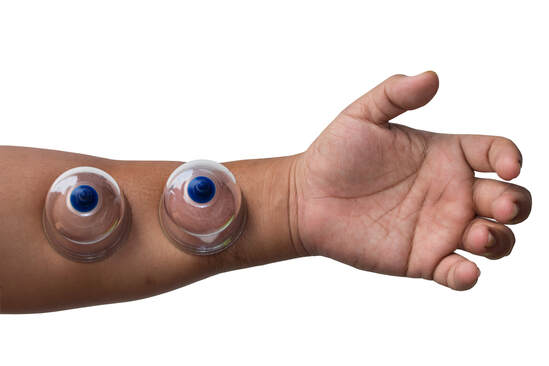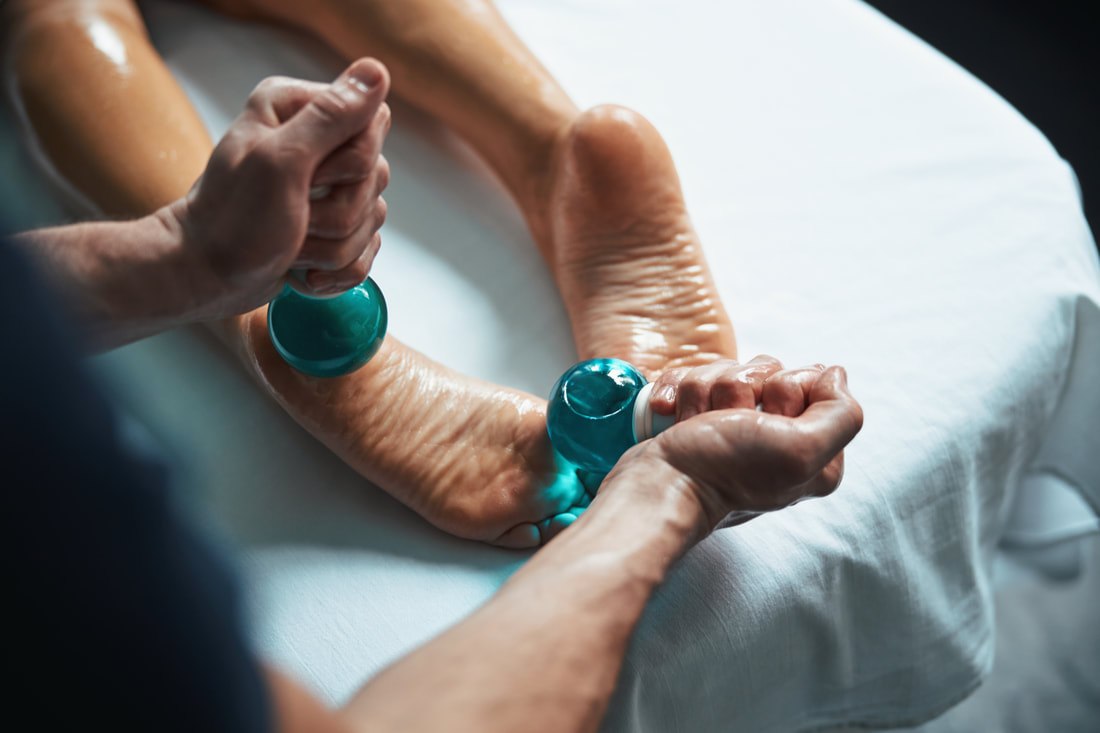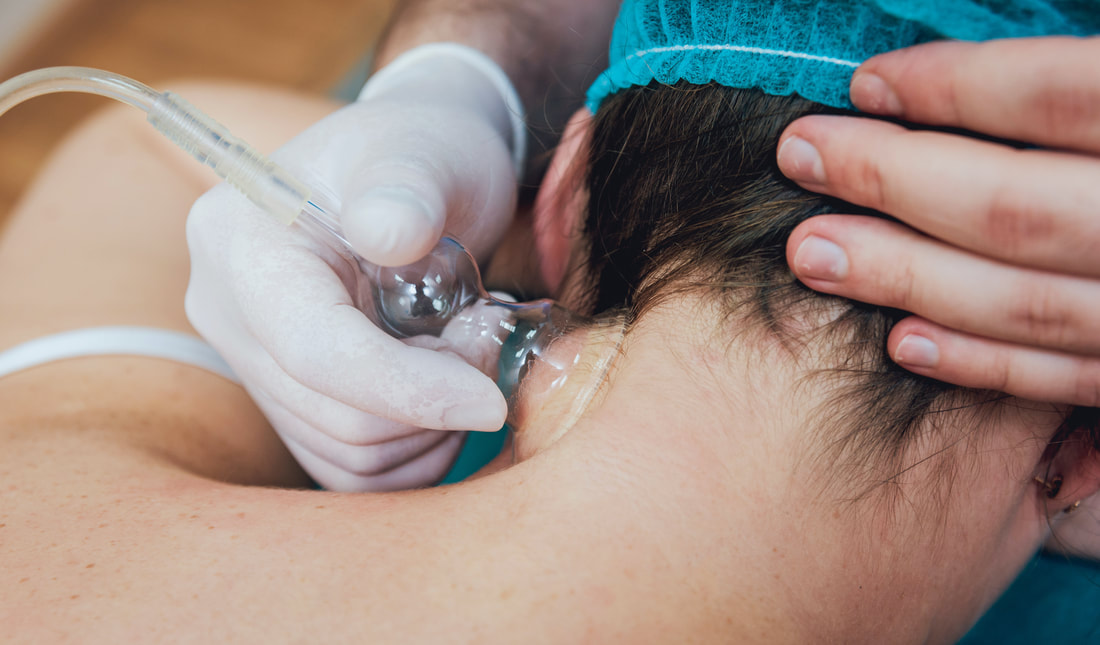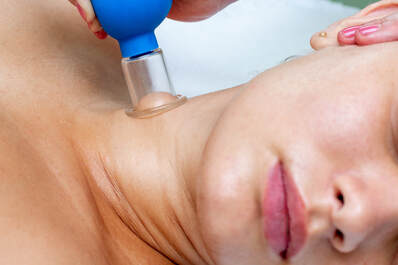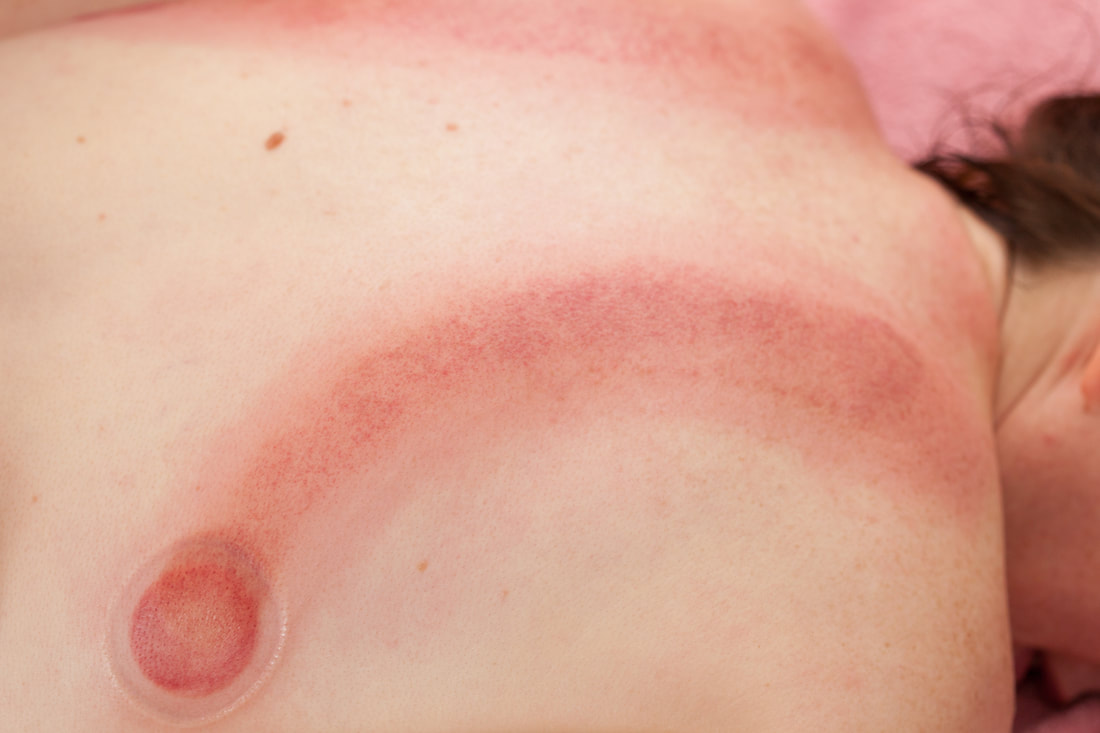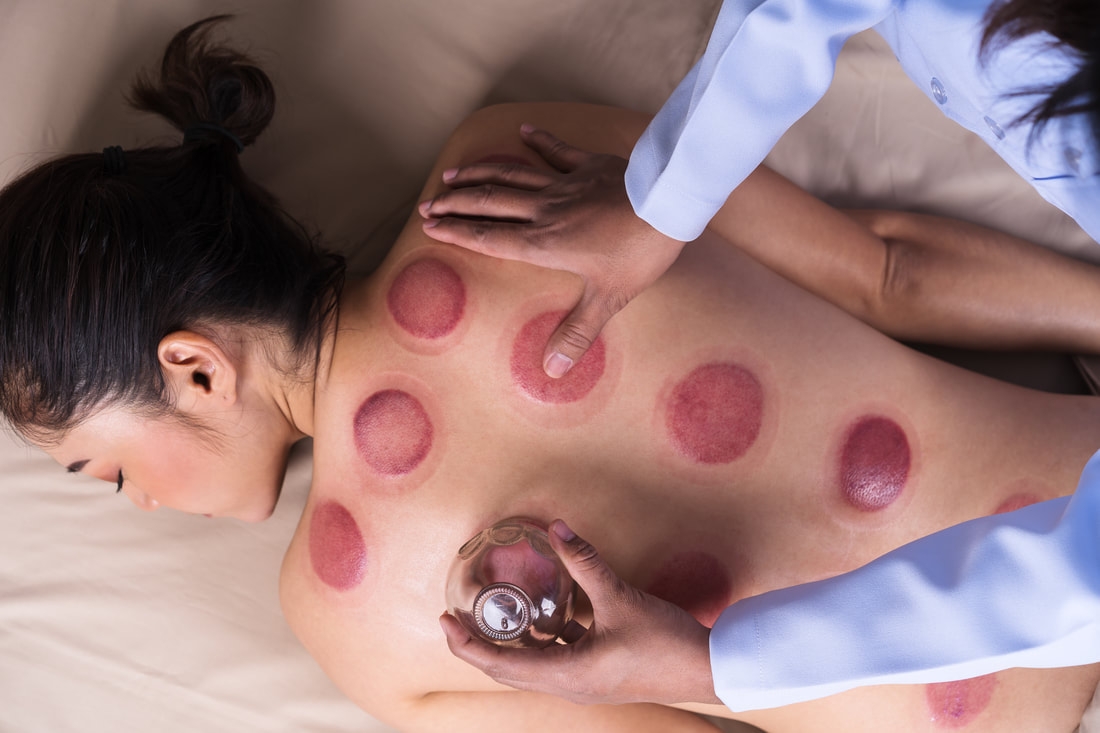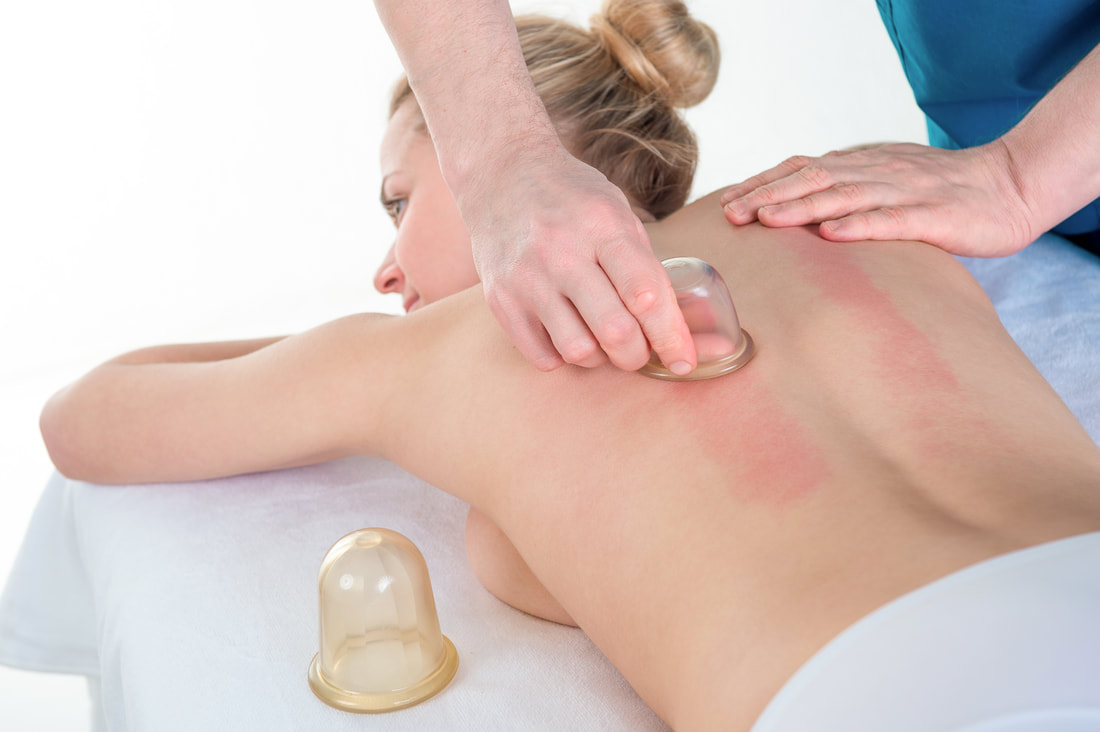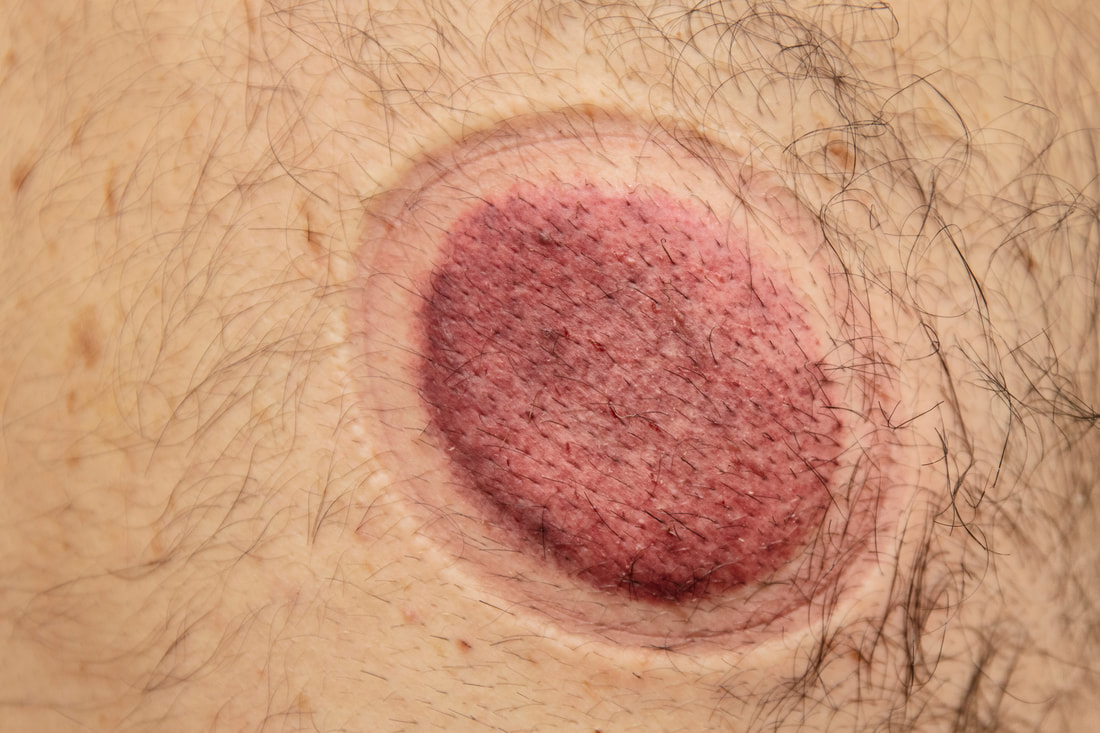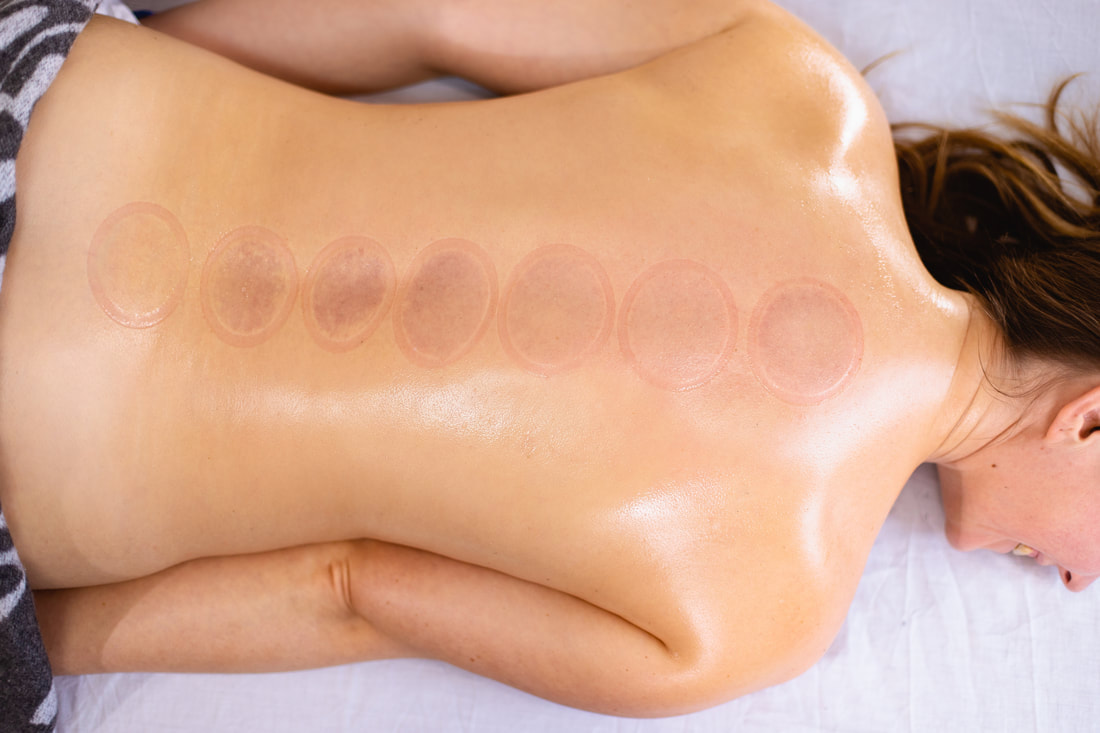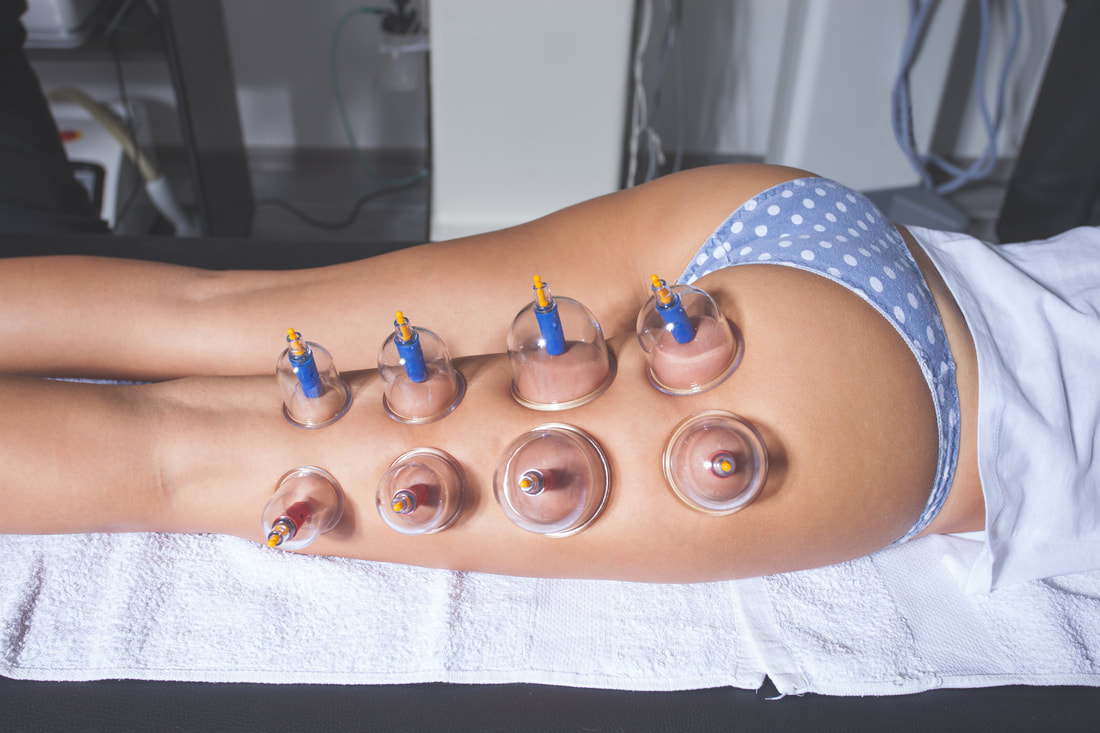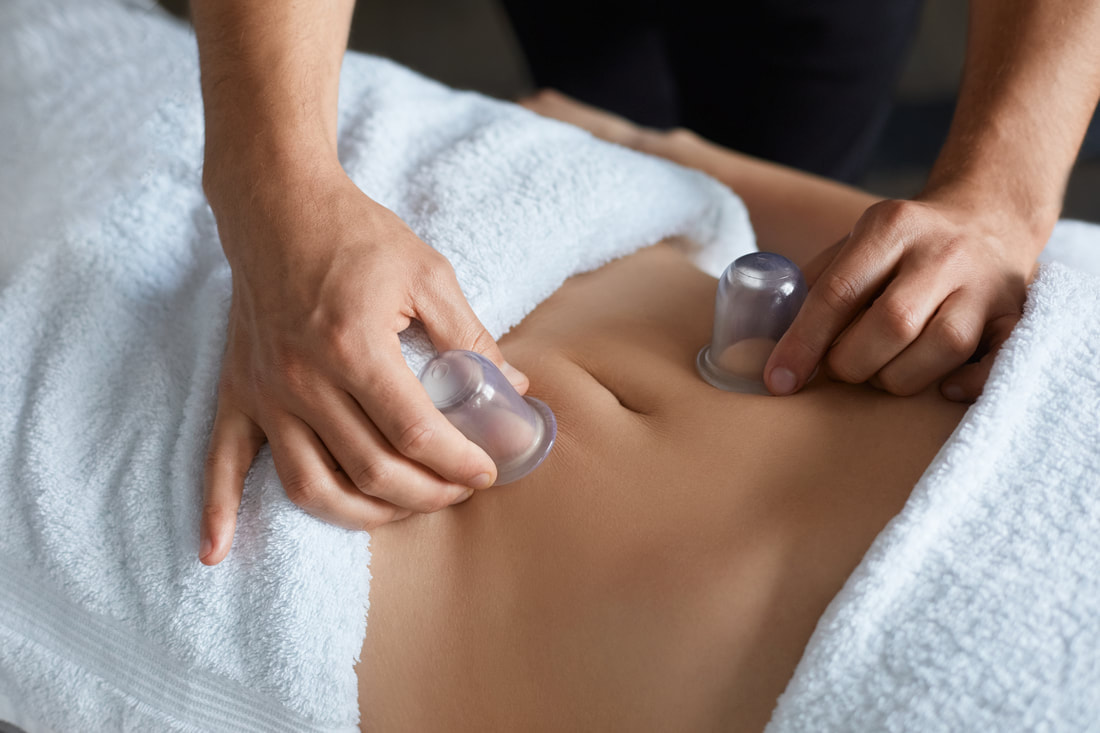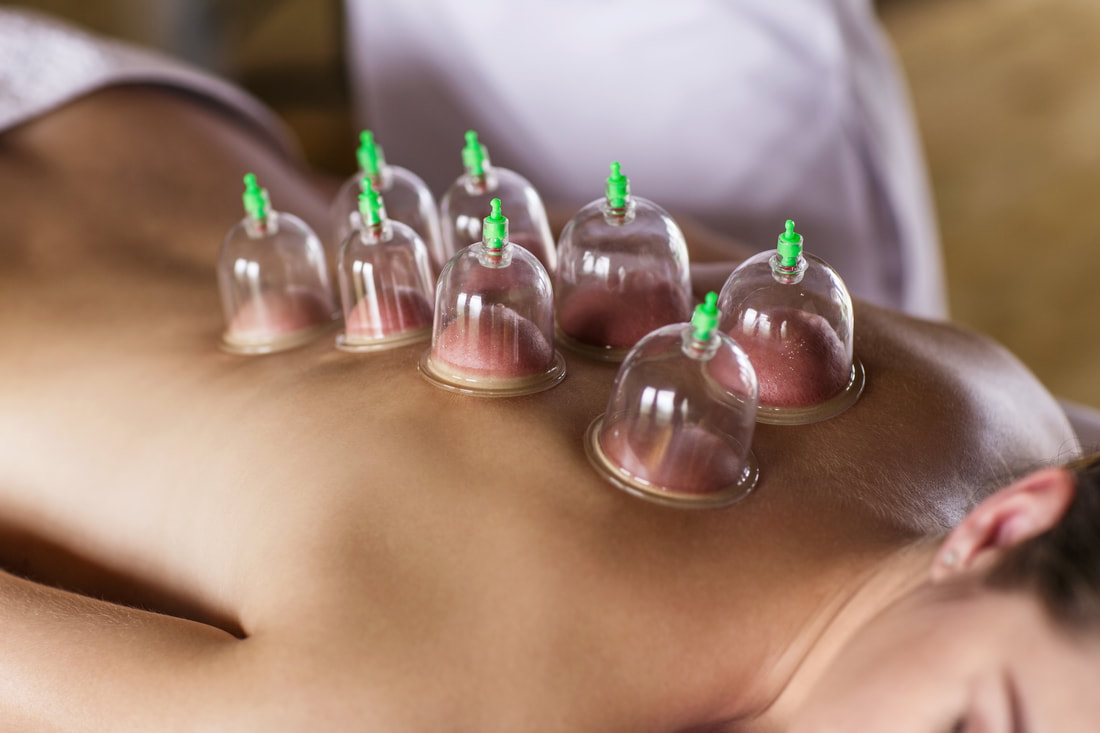MYOFASCIAL CUPPING
NOTE: If you have had cupping in the past and didn't like it or just didn't like the cupping marks, please give Deborah a try. With clear communication between you and your therapist, the therapist can try their best to achieve the results (and little cupping marks, if desired).
What is Cupping?
What is Cupping?
- Cupping therapy is based on the Traditional Chinese Medical (TCM) method of encouraging healing by creating negative pressure via suction. The main purpose is to enhance the circulation of blood and chi or qi.
- Myofascial Cupping is the therapeutic application of cups designed to release and mobilize soft tissue restrictions, increase blood flow, facilitate lymphatic movement, etc.
- Cupping goes by many names - Myofascial Cupping, Cup Therapy, Cupping, etc.
History
Cupping traces its documented history from TCM dating over 3,000 years ago (though multiple sources affirm that indigenous medicine people/shamans used versions of suction that predate TCM). In addition to Tui Na, Gua sha, acupuncture/acupressure, and herbs, cupping helps comprise the basic TCM approaches to bodywork. Other cultures utilizing cupping include ancient Egyptians, Greeks, and Romans, as supported by archeological texts (both Hippocrates and Galen were proponents of cupping therapy). From the ancient Greeks and Romans, cupping was then passed on to Arabs and Persians and even the prophet Mohammed sanctioned the use of cupping. In western cultures, cupping remained an integral part of conventional, alternative, and folk-based medicine until the early 20th century. An early pioneer of western surgery, Charles Kennedy wrote in 1826, "The art of cupping has been so well-known, and the benefits arising from it so long experienced, that it is quite unnecessary to bring forward testimonials in favor of what has received not only the approbation of modern times, but also the sanction of remotest antiquity." Interestingly, although cupping fell out of favor in the early 1900s, recent inventions like the modern breast pump evolved from the use of cups for lactation difficulties. The good news is cupping is enjoying a well-deserved resurgence of popularity and likely will continue for much time to come.
Cupping traces its documented history from TCM dating over 3,000 years ago (though multiple sources affirm that indigenous medicine people/shamans used versions of suction that predate TCM). In addition to Tui Na, Gua sha, acupuncture/acupressure, and herbs, cupping helps comprise the basic TCM approaches to bodywork. Other cultures utilizing cupping include ancient Egyptians, Greeks, and Romans, as supported by archeological texts (both Hippocrates and Galen were proponents of cupping therapy). From the ancient Greeks and Romans, cupping was then passed on to Arabs and Persians and even the prophet Mohammed sanctioned the use of cupping. In western cultures, cupping remained an integral part of conventional, alternative, and folk-based medicine until the early 20th century. An early pioneer of western surgery, Charles Kennedy wrote in 1826, "The art of cupping has been so well-known, and the benefits arising from it so long experienced, that it is quite unnecessary to bring forward testimonials in favor of what has received not only the approbation of modern times, but also the sanction of remotest antiquity." Interestingly, although cupping fell out of favor in the early 1900s, recent inventions like the modern breast pump evolved from the use of cups for lactation difficulties. The good news is cupping is enjoying a well-deserved resurgence of popularity and likely will continue for much time to come.
Eastern & Western Theories of Cupping Efficacy
"In every culture and in every medical tradition before ours, healing was accomplished by moving energy."
- Albert Szent-Gyorgyi, Biochemist and Nobel Prize Winner
TCM (Traditional Chinese Medicine) asserts that the skin is like a fence, and has the ability to breathe, defend, excrete, and regulate body temperature. This fence or force field is known as "wei chi" in TCM and is responsible for encouraging our overall wellness and prevention from infection and disease. In conjunction with wei chi, our meridians assist in health by clearing and removing "stagnation" out of our body.
The meridians are the energetic channels that connect the inside of our body (organs, glands, blood, nerves, etc.) with the outside of our body where the acupoints live. Ideally, meridians regulate, balance, and harmonize our body's Yin Yang forces and are the networks that transport nutrients and energy to our organs. We will be healthy if stagnation from the meridians are removed.
Stagnation may be viewed through a physical lens -- such as poor circulation, lymphatic congestion, digestive sluggishness, edema, excess mucus, areas of ischemia, etc. Also, stagnation may also be viewed via an energetic perspective: procrastination, rumination, fatigue, depression, etc. Cupping therapy focuses on clearing the following four categories of stagnation. Blood stagnation includes injuries, adhesions, and menstrual irregularities. Stagnant toxins refers to gastrointestinal disorders, rigid muscles, and breast inflammation. Qi stagnation includes muscular pain, dysmenorrhea, and pinched nerves. Any fluid stagnation relates to conditions like lung congestion, asthmas, and lactation dysfunction.
Through cupping on the skin, blood seeps out from the capillaries under the skin and forms discoloration or marks called "sha". Sha is the toxin and/or metabolic waste that accumulate due to stagnation. The darker the color of the sha, the more stagnation and therefore greater imbalance there is. The sha often presents in a circular shaped skin blemish similar to coloration of a bruise, but this is not in fact what is clinically occurring. A bruise is defined as a "contusion or dark painful area on the skin, where blood has escaped under the skin following a blow." However, the "cup kiss" is not the result of positive pressure, as in a blow or sudden impact. Rather these areas of sha are the result of negative pressure, which is clinically known as "ecchymosis".
Ecchymosis is a local leakage of blood into the skin from the capillaries through pulling (as opposed to pushing/pressure) and is usually painless. The ecchymosis will generally disappear within 3-5 days, though in rare cases of extremely pervasive stagnation, discoloration may last up to two weeks. When practicing cupping therapy, if there's no pain, there's no stagnation. And if there's no stagnation, no pain will present with the treatment.
For those interested in some of the finer points of TCM, it's important to see the inherent and profound relationship between blood and qi. A common axiom shared among TCM physicians asserts: "The blood carries the qi. And the qi moves the blood." This can be symbolized by imagining a skateboard and its rider as the blood and qi respectively. In this analogy, the blood carries the qi, like the skateboard carries the rider. And the qi moves the blood, as the rider propels the skateboard." At its simplest, cupping removes sha or stagnation resulting in blood and therefore qi purification.
An excerpt from Zihini Chirali's book, TCM Cupping Therapy summarizes the idea of blood purification as follows: "Among the general effects, the most important is the [cupping] effect on the circulatory system. Professor Kentaro Takagi of Nagoya University says that the skin stimulating therapies are significant in that they awaken the greatest responses in the circulatory system. Owing to the pull of low pressure, the flow of blood in the arteries and veins increases, although in the case of the latter, localized spots of congested blood appear and then disappear. It is possible to ease the interruption of blood circulation and congestion and to stop the inflammatory extravasation (escaping bodily fluids such as blood) from the tissues. Therefore, facilitation of the flow of blood is the most important characteristic of this therapy. It is very beneficial for hardened arteries, stiff shoulders, etc." Taking this one step further, Dr. Katase of Oaska University suggests that cupping may actually influence the composition of blood by increasing red and white blood cells and transforming acidic blood into a more healthy alkaline or neutral pH.
To summarize, cupping creates a vacuum suction and provides negative pressure, sometimes creating changes in skin coloration, or ecchymosis. This process invites blood to flow from as far a 4 inches deep to the skin lifting and drawing circulation from the arteries to the more superficial capillaries, fascial, and meridians. This enhanced circulation distributes greater levels of nutrition, oxygenation, qi flow into the surrounding areas, while simultaneously encouraging detoxification of cellular waste and excess fluid. The founder of Osteopathic Medicine, Andrew Taylor Stills, simply summates healing with this formula: "Circulation is all."
"In every culture and in every medical tradition before ours, healing was accomplished by moving energy."
- Albert Szent-Gyorgyi, Biochemist and Nobel Prize Winner
TCM (Traditional Chinese Medicine) asserts that the skin is like a fence, and has the ability to breathe, defend, excrete, and regulate body temperature. This fence or force field is known as "wei chi" in TCM and is responsible for encouraging our overall wellness and prevention from infection and disease. In conjunction with wei chi, our meridians assist in health by clearing and removing "stagnation" out of our body.
The meridians are the energetic channels that connect the inside of our body (organs, glands, blood, nerves, etc.) with the outside of our body where the acupoints live. Ideally, meridians regulate, balance, and harmonize our body's Yin Yang forces and are the networks that transport nutrients and energy to our organs. We will be healthy if stagnation from the meridians are removed.
Stagnation may be viewed through a physical lens -- such as poor circulation, lymphatic congestion, digestive sluggishness, edema, excess mucus, areas of ischemia, etc. Also, stagnation may also be viewed via an energetic perspective: procrastination, rumination, fatigue, depression, etc. Cupping therapy focuses on clearing the following four categories of stagnation. Blood stagnation includes injuries, adhesions, and menstrual irregularities. Stagnant toxins refers to gastrointestinal disorders, rigid muscles, and breast inflammation. Qi stagnation includes muscular pain, dysmenorrhea, and pinched nerves. Any fluid stagnation relates to conditions like lung congestion, asthmas, and lactation dysfunction.
Through cupping on the skin, blood seeps out from the capillaries under the skin and forms discoloration or marks called "sha". Sha is the toxin and/or metabolic waste that accumulate due to stagnation. The darker the color of the sha, the more stagnation and therefore greater imbalance there is. The sha often presents in a circular shaped skin blemish similar to coloration of a bruise, but this is not in fact what is clinically occurring. A bruise is defined as a "contusion or dark painful area on the skin, where blood has escaped under the skin following a blow." However, the "cup kiss" is not the result of positive pressure, as in a blow or sudden impact. Rather these areas of sha are the result of negative pressure, which is clinically known as "ecchymosis".
Ecchymosis is a local leakage of blood into the skin from the capillaries through pulling (as opposed to pushing/pressure) and is usually painless. The ecchymosis will generally disappear within 3-5 days, though in rare cases of extremely pervasive stagnation, discoloration may last up to two weeks. When practicing cupping therapy, if there's no pain, there's no stagnation. And if there's no stagnation, no pain will present with the treatment.
For those interested in some of the finer points of TCM, it's important to see the inherent and profound relationship between blood and qi. A common axiom shared among TCM physicians asserts: "The blood carries the qi. And the qi moves the blood." This can be symbolized by imagining a skateboard and its rider as the blood and qi respectively. In this analogy, the blood carries the qi, like the skateboard carries the rider. And the qi moves the blood, as the rider propels the skateboard." At its simplest, cupping removes sha or stagnation resulting in blood and therefore qi purification.
An excerpt from Zihini Chirali's book, TCM Cupping Therapy summarizes the idea of blood purification as follows: "Among the general effects, the most important is the [cupping] effect on the circulatory system. Professor Kentaro Takagi of Nagoya University says that the skin stimulating therapies are significant in that they awaken the greatest responses in the circulatory system. Owing to the pull of low pressure, the flow of blood in the arteries and veins increases, although in the case of the latter, localized spots of congested blood appear and then disappear. It is possible to ease the interruption of blood circulation and congestion and to stop the inflammatory extravasation (escaping bodily fluids such as blood) from the tissues. Therefore, facilitation of the flow of blood is the most important characteristic of this therapy. It is very beneficial for hardened arteries, stiff shoulders, etc." Taking this one step further, Dr. Katase of Oaska University suggests that cupping may actually influence the composition of blood by increasing red and white blood cells and transforming acidic blood into a more healthy alkaline or neutral pH.
To summarize, cupping creates a vacuum suction and provides negative pressure, sometimes creating changes in skin coloration, or ecchymosis. This process invites blood to flow from as far a 4 inches deep to the skin lifting and drawing circulation from the arteries to the more superficial capillaries, fascial, and meridians. This enhanced circulation distributes greater levels of nutrition, oxygenation, qi flow into the surrounding areas, while simultaneously encouraging detoxification of cellular waste and excess fluid. The founder of Osteopathic Medicine, Andrew Taylor Stills, simply summates healing with this formula: "Circulation is all."
What's Up With the Cupping Marks?
Note: You may experience redness, raised areas and/or bruising marks on the body. However, the therapist can use different techniques to minimize or not leave these marks. This will be discussed during your intake.
Note: You may experience redness, raised areas and/or bruising marks on the body. However, the therapist can use different techniques to minimize or not leave these marks. This will be discussed during your intake.
- Bruising
- They are likely due to small capillary rupture
- Redness
- Temporary redness is due to vasodilation
- Raising (anti-pitting)
- Indicates thickened, viscous, protein rich ground substance in the extracellular matrix
- In other words the tissue is "boggy"
- Indicates chronic inflammation
- Divetting
- (when not over a body landmark) indicates a soft tissue adhesion
Cupping Benefits:
- Stimulate body's defense system (TCM calls this "wei chi")
- Assist with lymphatic drainage to reduce swelling and edema
- Increase blood flow to aid in healing
- Regulate meridian flow
- Improve oxygen supply
- Enhance immune system (lymphatic system)
- Skin warms with increased circulation
- Sedate the nervous system (which makes it an excellent treatment for high blood pressure)
- Desensitize regions of pain and irritability
- Modulate pain through enkephalin release
- Improve mobility quickly via stretch reflex modulation
- Reduce muscle spasm
- Release trigger points painlessly
- Mobilize scar tissue & adhesions
- Increase soft tissue length and extensibility
- Reduce tissue stiffness and viscosity
- Release nerve entrapments and improve nerve mobility
- Relieve back and neck pains
- Stiff muscles
- Anxiety
- Fatigue
- Migraines
- Rheumatism
- Cellulite
- Muscle spasms, sprains, and strains
- Fibromyalgia
- Migraines and headaches
- Digestive discomfort
- Fluid retention (edema)
- Detoxing
- Poor circulation
- Cellulite
- Insomnia
- Stress
- Depression
- Decreased energy
- Adrenal fatigue
- Tissue and joint inflammation
- Tired sore and overworked muscles
- Arthritis
- Rheumatism
- Osteoporosis
- Carpal Tunnel Syndrome
- Back pain
- Sciatica
- Scar tissue
- Stretch marks
- Common cold
- Restless leg syndrome
- Heart condition or arterial/venous disease
- Renal failure history
- Cirrhosis
- Uncontrolled high blood pressure
- Clients who are fasting
- Active infection
- Those on blood thinners or have history of thrombosis
- Severe anemia
- Leukemia
- Pregnancy (during the first trimester of pregnancy - 2nd and 3rd are okay with a doctor's approval)
- Blood disorders
- Blood clotting disorders (eg. hemophilia, blood clots, etc.)
- High fever
- In areas that would embarrass the client (being seen by others)
- Acute inflammation
- Locations of Hernias (current or repair)
- Localized broken skin / open sores
- Over active tumors
- Inflamed skin / rashes
- Dermatitis
- Varicose veins
- Also see joint replacement, broken bones, and surgeries below (in next section)
- Wait 9 months after joint replacement surgery on the affected area
- Wait 3 months after all other surgeries and/or bone fractures on the affected areas
- No skin exfoliation directly prior to cupping
- Inform the therapist of areas where you would not like others to see any discolorations or bruising. The therapist can use different techniques to minimize or not leave these marks. This will be discussed during your intake.
- Avoid excessive strenuous activities following treatment
- Drink warm or hot water following treatments for maximized detoxification
- Keep the body warm following the treatments
- excessively cold or hot after treatment
- dizzy or faint
- nauseous
- experiencing cold sweats or palpitations
How Does It Work?
- Chemical Changes
- Chemical changes occur as a result of fluid movement
- Cupping induces ischemia (blood starvation)
- Vessels are sensitive to ischemia and hypoxia (oxygen deprivation) and dilate in response (vasodilation) to produce a reactive hyperemia (increased blood flow)
- Increase in flow helps clear waste and bring in oxygen and nutrients
- Cupping can also rupture small vessels and bring "new free blood" into an area
- Blood is rich in healing factors like platelets
- Free blood in the tissue is useful to accelerate tissue healing
- Best used on slow healing passive tissue like tendons (tendinosis) and ligaments
- Cupping can also assist with dispersing inflammation, edema, and swelling
- Cupping can assist with clearing lymph
- Lymphatic vessels and nodes are stimulated and facilitated by changes in pressure
- Cupping can aid in the clearance of lymphatic fluid using light gliding techniques (to the lymphatic vessels under the skin) and pumping techniques (to the lymph nodes)
- Neurological Changes
- Neurological changes occur as a result of electrical movement
- Neurological changes are fast adapting as they involve electrical changes
- Cupping can help desensitization irritable nerves
- Helps to treat high irritability, hyperalgesia, CRPS
- Can be used prior to deeper techniques
- Cupping can induce pain modulation by activating the body's pain control system
- By producing a controlled pain response using the cups, the body releases endogenous opiods/enkaphalins
- This can be used to treat chronic stable pain
- Cupping can make immediate gains in mobility via stretch reflex modulation
- By applying cups while stretching, the muscle spindles (which control the stretch reflex) are overstimulated
- At a given joint angle, the brain senses a huge stretch
- When the cups are removed, the same stretch angle feels like nothing, in essence reducing the gain on the stretch reflex
- This is a form of desensitization
- For example:
- If I apply a moderate grade stimulus, you feel a moderate grade stimulus
- But if I apply a high grade stimulus first, and then a moderate grade stimulus, becuause the high grade was applied first, the second stimulus is perceived as being lower than it really is
- Cupping can help to reduce muscle spasm and hypertonicity
- By providing a consistent stretch to the tissue, cupping stimulates the golgi tendon organ or GTO
- After prolonged stimulation, the GTO inhibits the stretch reflex through a process called autogenic inhibition
- This in turn reduces gamma motor gain and inhibits muscle tone
- Trigger point release
- Trigger points are clusters of hyper-contracted muscle spindles
- Cupping mechanically deforms trigger points which may help to unwind the local contraction
- By flushing the trigger point with blood, inflammatory chemicals such as substance P are flushed
- This, in turn, may reduce the irritability of free nerve endings (nociceptors, or pain receptors) that propagate the trigger point
- Mechanical Changes
- Mechanical changes occur as a result of tissue movement
- Cupping mechanically deforming tissue all the way down to the muscle
- Cupping has the potential to:
- Reduce tissue stiffness
- Increase tissue length along lines of tension of fascial lines, or along a muscle's origin to insertion
- Mobilize adhesions and scars
- Improve nerve tract mobility
- Cupping is able to provide sufficient force and duration to induce both short and long term changes to tissue extensibility via:
- Short term changes occur through stress relaxation and creep (elastic deformation)
- Long term changes occur through plastic deformation (mechanical tissue disruption) and mechanotransduction(gene expression through repeated mechanical stimulus)
- Cupping helps to reduce tissue stiffness because:
- Human tissue is viscoelastic
- Viscous - like honey, deform it and it stays deformed
- Elastic - like rubber, deform it and it snaps back
- Viscoelastic = like a rubber tube, filled with honey
- It deforms quickly, and reforms slowly
- Cupping applies an "agitating" force to human tissue (like stirring honey, or repeatedly bending a honey filled rubber tube)
- As it's agitated, viscoelastic tissue becomes less stiff
- This is referred to as thixotropy
- Reductions in tissue stiffness last 2-4 hrs after treatment
- Human tissue is viscoelastic
- In addition:
- Basic stretching pulls tissue in two directions
- Cupping adds a third direction of stretch, which has the potential to increase the efficacy of standard stretching
Schedule your Cupping w/Deep Tissue Massage session soon
Metta is "loving kindness."
Most simply, metta is the heartfelt wish for the well-being of oneself and others.
Click here to read more about "What is Metta."
Most simply, metta is the heartfelt wish for the well-being of oneself and others.
Click here to read more about "What is Metta."
Site powered by Weebly. Managed by StartLogic
